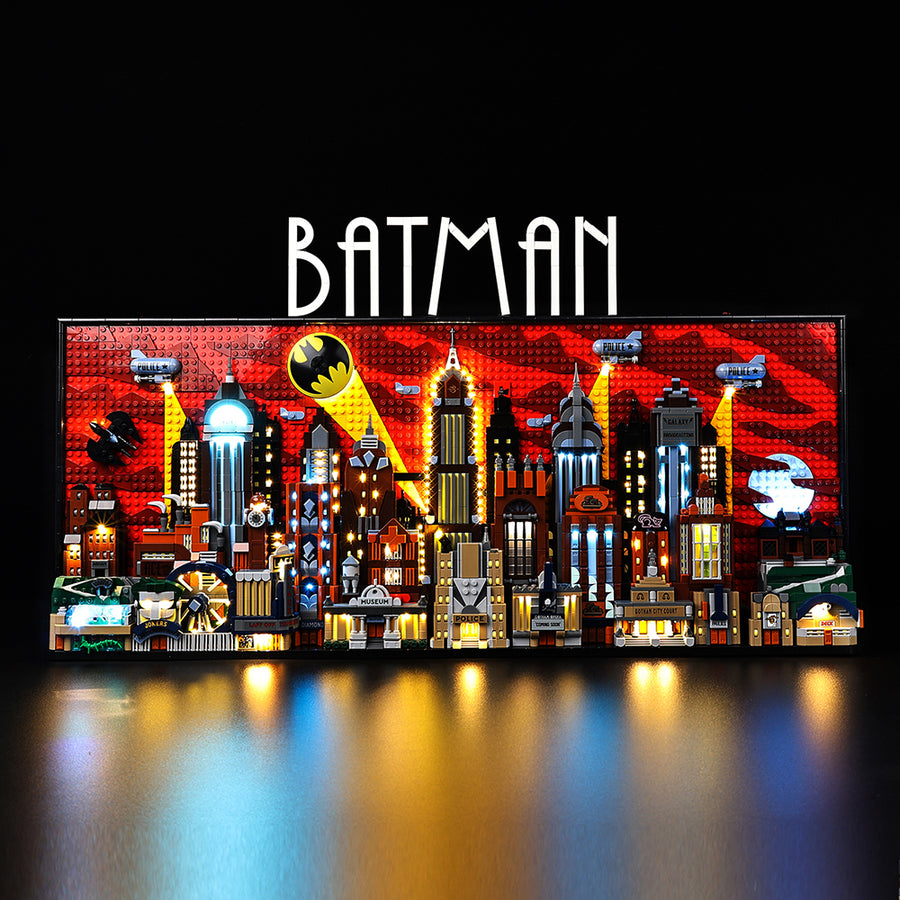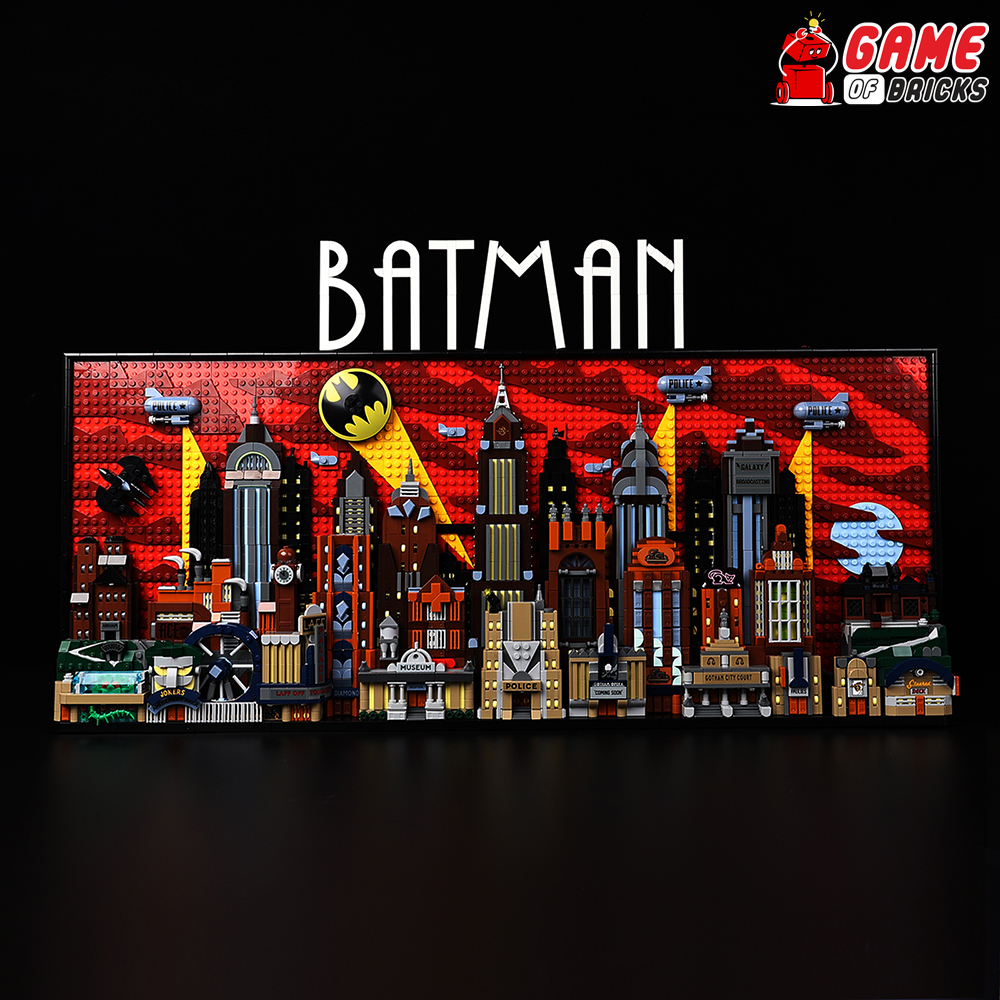What is LEGO® Technic and How Does It Compare to Traditional LEGO®?
LEGO® Expert Builder
When LEGO® introduced the Technic series in 1977, it marked a revolutionary expansion in the world of creative building. LEGO® Technic, known initially as "Expert Builder" and later "Technical Set" before settling on its current name, offered something entirely new. It wasn't just about creating static models; it was about building machines that move, function, and mimic real-life mechanics.
LEGO® Technic is characterized by its unique approach to construction. Unlike traditional LEGO®, which primarily uses standard bricks for building, LEGO® Technic is built around "LEGO® technic bricks" - specialized pieces such as gears, axles, pins, and beams. These elements allow for the creation of complex models with real-life functionalities like gearboxes, pistons, and suspension systems. It's a series that transcends the boundaries of traditional LEGO®, offering builders the chance to explore the principles of mechanics and engineering.
This introduction to LEGO® Technic serves as an exciting gateway into a world where creativity meets complexity. In this article, we will delve deeper into what sets LEGO® Technic apart, how it compares to traditional LEGO® bricks, and why it has become a beloved series for LEGO® enthusiasts seeking a more challenging and intricate building experience. From the cornerstone "LEGO® technic bricks" to the sophisticated models they create, LEGO® Technic is a testament to the endless possibilities of the LEGO® universe.
Understanding LEGO® Technic
The Evolution of LEGO® Technic
The journey of LEGO® Technic began in 1977, but its roots can be traced back to the foundational principles set by LEGO® in the 1940s. Originally termed as the “Expert Builder” series, LEGO® Technic was a departure from the conventional block-building sets, introducing a new level of complexity and realism to LEGO® creations. Over the years, it evolved, rebranding as “LEGO® Technic” in 1982, and continually incorporating more sophisticated technology and design principles.
This evolution was marked by several milestone sets. In the 1980s, models like the LEGO® Technic Car Chassis (Set 853) introduced realistic car functions such as steering, gearboxes, and piston engines. The 1990s saw an increase in the intricacy of models with pneumatics, more advanced gear systems, and even the introduction of electric motors.
The 21st century brought about a fusion of digital technology with LEGO® Technic, exemplified by programmable robotics kits like the Mindstorms series. These developments have not only enhanced the building experience but have also opened avenues for learning and innovation, making LEGO® Technic a favorite among not just hobbyists but educators and engineers.
Key Characteristics of LEGO® Technic Bricks
LEGO® Technic stands apart from traditional LEGO® due to its distinct set of components and functionalities. Here are some of the key characteristics:
- Gears and Gearboxes: A staple in LEGO® Technic sets, gears are used to transfer motion and torque in models, mimicking real-life machinery.
- Beams and Frames: Unlike traditional LEGO® bricks, Technic beams are not solid but feature rows of holes. These holes allow for more versatile connections, using pins rather than the traditional stud-and-tube interlocking.
- Connectors and Joints: These elements are crucial for creating realistic, movable joints in models, allowing for more dynamic and flexible structures.
- Axles and Pistons: Axles are used for transmitting rotational or linear motion, essential in building realistic vehicle models, while pistons can replicate engine movements.
- Advanced Functionalities: Many Technic sets include complex functionalities like suspension systems, pneumatics, and even electrical components, allowing builders to create models that not only look realistic but also function similarly to their real-world counterparts.
LEGO® Technic bricks, with their specialized parts and advanced functionalities, offer a more intricate and realistic building experience. They push the boundaries of what can be achieved with LEGO®, turning simple builds into sophisticated, functional models that both entertain and educate.
Traditional LEGO® Bricks
The Basics of Traditional LEGO®
Traditional LEGO® bricks represent the quintessential building blocks that have captivated generations of creators. These bricks, known for their simple and versatile design, form the core of the LEGO® system of play. The basic characteristics of traditional LEGO® bricks include:
- Interlocking Mechanism: The most distinctive feature is the interlocking principle – studs on top and tubes inside. This design allows bricks to be easily connected and separated, providing a secure fit.
- Uniform Dimensions: Standardization in size and shape across all bricks ensures compatibility, allowing pieces from different sets to be combined seamlessly.
- Diverse Shapes and Colors: Traditional LEGO® sets include a wide variety of brick shapes and colors, offering endless creative possibilities. From standard rectangular bricks to more specialized pieces like windows, doors, and wheels, the diversity is vast.
-
Material Quality: Made from durable plastic, these bricks are designed to last and maintain their clutch power over time, even after repeated use.

The Appeal of Traditional LEGO®
Traditional LEGO® bricks have remained incredibly popular due to several key factors:
- Simplicity: The straightforward nature of traditional LEGO® allows builders of all ages to engage with them easily. This simplicity is the foundation of their universal appeal.
- Versatility: The ability to build virtually anything imaginable, from simple structures to complex models, makes traditional LEGO® bricks extraordinarily versatile. They are tools for open-ended creativity, limited only by one’s imagination.
- Imaginative Play: Traditional LEGO® sets encourage imaginative play. They allow builders to create their own worlds and stories, fostering creativity and problem-solving skills.
- Cross-Generational Appeal: The timeless nature of traditional LEGO® means that they appeal to both children and adults alike, often bridging the gap between generations.
- Educational Value: Besides being fun, building with traditional LEGO® bricks has educational benefits, including developing fine motor skills, spatial awareness, and planning skills.
The enduring popularity of traditional LEGO® bricks lies in their ability to blend simplicity with versatility, offering an avenue for imaginative play and creative expression that is as boundless as the builder’s imagination.
Comparing LEGO® Technic with Traditional LEGO®
Complexity and Building Experience
When it comes to the building experience, LEGO® Technic and traditional LEGO® offer distinctly different challenges and satisfactions.
LEGO® Technic:
- Complexity: LEGO® Technic sets are inherently more complex. They often include intricate parts like gears, axles, and connectors, requiring a more in-depth understanding of mechanics.
- Building Process: The building process is more technical and time-consuming. It requires careful attention to detail, as the functionality of the model often depends on the precise placement and orientation of parts.
- Skills Developed: Building with LEGO® Technic can develop advanced skills such as problem-solving, mechanical reasoning, and even basic engineering principles.
Traditional LEGO®:
- Simplicity and Accessibility: Traditional LEGO® sets are generally more straightforward to assemble. They are more accessible to younger builders and ideal for those who enjoy a more freeform building experience.
- Creativity-Focused: The building experience with traditional LEGO® is often more about creativity and imagination. The simplicity of the bricks allows for a wide range of designs to be easily realized.
-
Skills Developed: While simpler, traditional LEGO® still fosters creativity, spatial awareness, and fine motor skills.

Subsection 3.2: Creative and Educational Value
Both LEGO® Technic and traditional LEGO® have unique creative and educational values.
LEGO® Technic:
- Creative Value: LEGO® Technic allows for the creation of models that not only look realistic but also function similarly to their real-world counterparts. This adds a layer of satisfaction to the building process.
- Educational Value: The Technic series is particularly educational for those interested in mechanics and engineering. It offers a practical understanding of how various mechanisms work in real life, making it a valuable educational tool.
Traditional LEGO®:
- Creative Value: Traditional LEGO® offers a more open-ended creative experience. The versatility of the bricks means you can build almost anything you can imagine, from simple structures to elaborate dioramas.
- Educational Value: While it might not delve into the complexities of mechanics like Technic, traditional LEGO® is excellent for early childhood development. It teaches fundamental building concepts, nurtures creativity, and can be a springboard for storytelling and role-playing.
In summary, while LEGO® Technic is characterized by its mechanical complexity and realistic functionalities, traditional LEGO® stands out for its simplicity and boundless creative potential. Both types of LEGO® provide unique and valuable experiences, catering to different interests and skill levels.
Who Should Choose LEGO® Technic?
Ideal Audience for LEGO® Technic
LEGO® Technic, with its intricate designs and mechanical complexities, appeals to a specific segment of LEGO® enthusiasts. Here are those who might find LEGO® Technic especially engaging:
- Older Children and Teenagers: Children who have outgrown traditional LEGO® sets and are looking for a more challenging building experience often gravitate towards LEGO® Technic. It offers an opportunity to build more sophisticated, functional models.
- Hobbyists and Adult Fans of LEGO® (AFOLs): Adults who enjoy model-building and are fascinated by the mechanics and engineering aspects of construction will find LEGO® Technic rewarding. It offers a more mature building experience that goes beyond simple construction.
- Aspiring Engineers and Mechanics: Those with an interest in engineering, mechanics, and how things work will appreciate the realistic functionality that LEGO® Technic offers. It’s a hands-on way to understand mechanical concepts.
-
Educators in STEM: Teachers and educators looking for practical tools to teach concepts in science, technology, engineering, and mathematics will find LEGO® Technic a valuable resource.

Projects and Models
LEGO® Technic has produced some iconic sets that showcase the range and capability of what can be built with these advanced bricks. Some notable examples include:
- Porsche 911 GT3 RS: A detailed model that captures the essence of its real-life counterpart, complete with a fully functional gearbox, detailed engine with moving pistons, and authentic bodywork.
- Liebherr R 9800 Excavator: One of the largest and most complex LEGO® Technic sets, this model features advanced app-controlled functionalities, including multiple motors and precise movement.
- Bugatti Chiron: This model is celebrated for its aesthetic beauty and mechanical accuracy. It features a detailed W16 engine, an eight-speed gearbox, and an active rear wing.
- Crane Truck 42009: Known for its sheer size and functional complexity, this set includes motorized functions like an extendable outrigger, automated crane arm, and a winch.
- Mindstorms Series: A fusion of LEGO® building and coding, Mindstorms sets allow builders to create and program their own LEGO® robots, offering a unique introduction to robotics.
LEGO® Technic sets stand out for their complexity, realism, and functional sophistication. They are ideal for those who seek more than just the assembly of bricks, offering a deeper, more educational building experience.
Conclusion
In our exploration of the captivating world of LEGO®, we've delved into the intricacies of LEGO® Technic and how it stands in contrast to traditional LEGO. LEGO® Technic, with its specialized "LEGO® technic bricks," gears, and advanced functionalities, offers a more complex and realistic building experience tailored for those fascinated by mechanics and engineering. It appeals particularly to older children, hobbyists, and those with a keen interest in the inner workings of machines.
On the other hand, traditional LEGO®, with its simple interlocking bricks and limitless creative potential, continues to charm builders of all ages, encouraging imagination and storytelling. It's the go-to choice for those who relish the freedom of creating anything from the depths of their imagination.
Both LEGO® Technic and traditional LEGO® have their unique appeals and offer different experiences. As builders, you have the wonderful opportunity to choose between, or even combine, these two worlds based on your interests and skill levels. Whether it's the complex, functional designs of LEGO® Technic or the imaginative, free-form creations of traditional LEGO®, each offers a unique pathway to creativity and learning. So, dive into these diverse LEGO® realms and discover what ignites your passion and creativity the most.
We'd love to see the incredible creations you've built, whether with LEGO® Technic or traditional LEGO® bricks. Share your masterpieces and experiences with us and join a community of passionate builders. Delve into the diverse range of LEGO® Technic sets available and discover new challenges and opportunities for creativity. Connect with fellow LEGO® enthusiasts in online forums and social media groups to exchange ideas, tips, and inspiration. Your next LEGO® project could be the start of something extraordinary!
The LEGO® universe is a vast expanse of creative potential, offering something for everyone. From the intricate mechanics of LEGO® Technic to the imaginative versatility of traditional LEGO®, the possibilities are endless. Step into this world of endless creativity and let your imagination take flight. Whether you're an aspiring engineer or a storyteller at heart, LEGO® offers a canvas for all your creative endeavors.
Top












Leave a comment